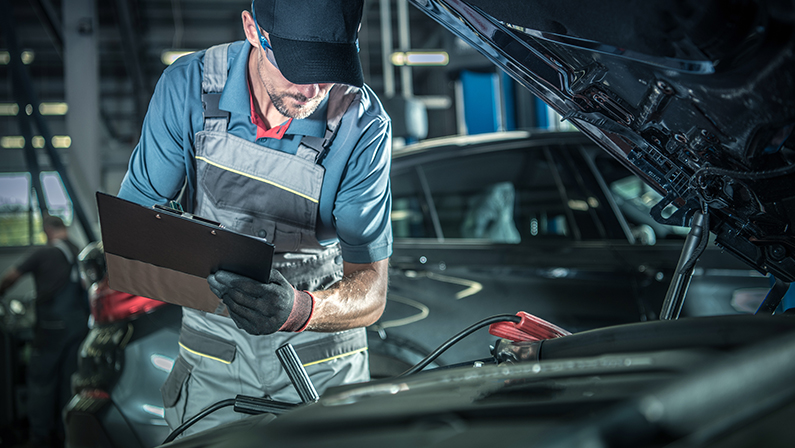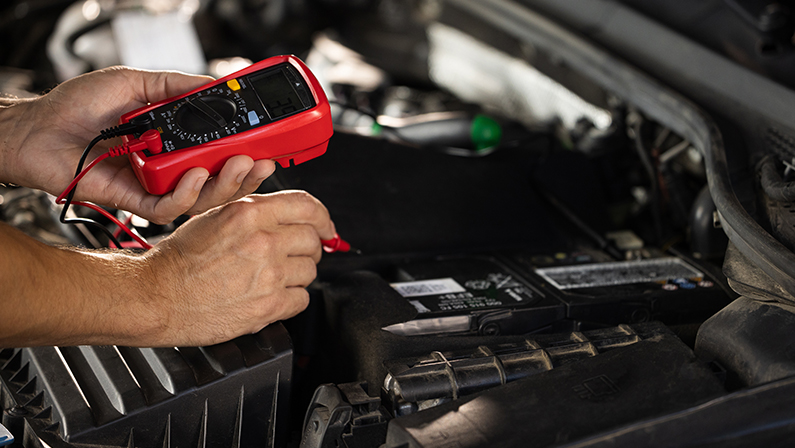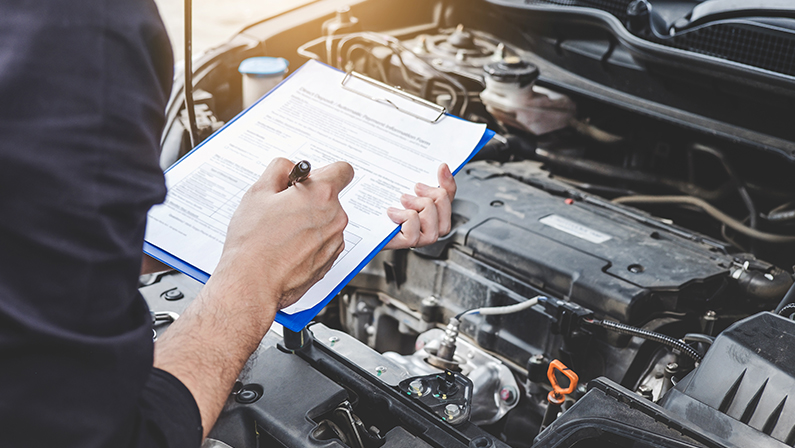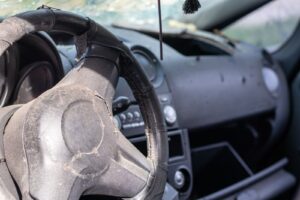An evaporative emission control system (EVAP), also known as an EVAP control system or simply EVAP system, plays a vital role in reducing your car’s environmental impact. But what happens when this system springs a leak? Let’s explore the world of EVAP leaks and how to keep your car running clean.
What Is The EVAP System?
Your car’s fuel tank isn’t completely airtight. As gasoline evaporates, vapors escape the tank. The EVAP system, short for evaporative emission control system, acts as a kind of pollution trap in your car. It captures gasoline vapors that escape from the fuel tank and keeps them from venting into the atmosphere. These vapors, if released, contribute to smog and air pollution.
What is an EVAP system leak?
An EVAP system leak occurs when there’s a breach in the system that allows the captured gasoline vapors to escape before they can be routed back to the engine and burned.
This can happen in a few ways:
- Cracks or Breaches: Hoses, valves, or the charcoal canister itself can develop cracks or become loose over time, creating openings for vapors to leak out.
- Loose Gas Cap: The gas cap is a common culprit. A loose or faulty cap won’t properly seal the fuel tank, allowing vapors to escape easily.
- External Damage: Bumps, accidents, or even extreme weather conditions can damage various components of the EVAP system, leading to leaks.
Leaking fuel vapors are not only bad for the environment, but they can also cause other problems for your car.
Here are some signs that you might have an EVAP leak:
- Check Engine Light: The OBD-II system might throw a specific code related to an EVAP leak.
- Strong Gas Odor: You might notice a stronger-than-usual gasoline smell around your car.
- Increased Emissions: Unburned fuel vapors contribute to air pollution.
- Decreased Fuel Efficiency: Leaking fuel vapors represent wasted fuel.
If you suspect an EVAP leak in the car, it’s important to get it diagnosed and repaired by a qualified mechanic. Not only will this help you avoid failing an emissions test, but it will also ensure your car is running cleanly and efficiently.
What Causes an EVAP Leak?
EVAP leaks can stem from various issues affecting the system’s components and functionality.
Here’s a closer look at some of the most common small EVAP leak causes:
1. Wear and Tear
Over time, just like any other system in your car, the EVAP system’s components are prone to wear and tear. Rubber hoses can crack and become brittle, valves might malfunction, and seals can wear out. These breakdowns create openings for fuel vapors to escape.
2. Loose or Damaged Gas Cap
The gas cap plays a critical role in sealing the fuel tank and preventing vapors from leaking out. A loose or damaged gas cap is a frequent cause of EVAP leaks. Ensure your gas cap clicks shut properly and isn’t cracked or warped for a proper seal.
3: Rough Handling
Bumps and jolts on rough roads or off-road driving can put stress on the EVAP system’s hoses and connections. These impacts can cause them to loosen, disconnect, or even crack, leading to leaks.
4. Accidents or Collisions
Accidents or collisions can inflict significant damage on your car, and the EVAP system isn’t immune. A forceful impact can damage hoses, the charcoal canister, or other components, creating leaks in the system.
5. Harsh Environmental Conditions
Extreme temperatures, both hot and cold, can accelerate wear and tear on the EVAP system’s components. Exposure to harsh weather elements can make hoses more brittle and prone to cracking, increasing the risk of leaks.
6. Fuel Quality
Using low-quality fuel can damage the EVAP system components. Contaminants or additives in low-grade fuel can degrade hoses and seals, leading to leaks and malfunctions within the system. Sticking to reputable gas stations and recommended fuel types for your car is essential.
How to Diagnose an EVAP System Leak

A suspected EVAP or evaporative system leak requires some detective work to pinpoint the exact source.
Here are several methods you can use to diagnose the leak:
1. Check the Gas Cap
This is the simplest and most common cause of EVAP leaks. Before diving into complex solutions, start by making sure your gas cap is tight and secure. A loose or damaged cap won’t seal the fuel tank properly, allowing vapors to escape. Give it a good, firm press to ensure a proper click, and check for any cracks or visible damage on the cap itself.
2. Visual Inspection
Grab a flashlight and take a close look at the EVAP system components, which you can easily access. Look for any loose or disconnected hoses, cracks in valves or fittings, or signs of wear and tear on any visible components. While a complete inspection might be challenging without specialized tools, this initial visual check can reveal some obvious causes.
3. Use a Smoke Machine (Professional Use)
Professionals often utilize a smoke machine to diagnose EVAP leaks. This machine pumps smoke into the sealed EVAP system, and any leaks will allow the smoke to escape, making them easier to spot. While not a DIY option, this method is a highly effective way to pinpoint the exact location of the leak.
4. OBD-II Scanner

Your car’s onboard diagnostics (OBD-II) system can be a valuable tool in identifying potential EVAP leaks. A scan might reveal specific trouble codes related to the EVAP system, giving you a starting point for further diagnosis. It’s important to note that a code reader can’t pinpoint the exact leak location, but it can guide you in the right direction.
5. Visual Inspection of the Charcoal Canister
The charcoal canister is a key component in the EVAP system. If possible, try to locate the canister and visually inspect it for any dents, cracks, or signs of wear on the outer shell. While damage to the canister itself is less common, it’s still worth checking during your visual inspection.
6. Professional Inspection
If you’ve gone through these steps and are still unable to locate the source of the leak, or if the leak seems complex, it’s best to consult a qualified mechanic. They have the expertise, tools, and potentially a smoke machine to properly diagnose the EVAP control system leak and recommend the necessary repairs.
Don’t Ignore the Check Engine Light: Dangers of Driving With an EVAP Leak
While a minor EVAP leak might not cause immediate problems with your car’s drivability, it can lead to several issues that can harm your car, your wallet, and the environment.
Here’s why you shouldn’t ignore EVAP system leak symptoms:
Increased Emissions
The core function of the EVAP system is to capture and burn fuel vapors. When there’s a leak, these unburned vapors escape into the atmosphere, contributing to smog and air pollution.
Decreased Fuel Efficiency
Leaking fuel vapors represent wasted fuel. As the vapors escape the system instead of being routed back to the engine, you’ll experience a decrease in gas mileage and potentially have to fill up more often.
Strong Gas Odor
A noticeable gasoline smell around your car can be a telltale sign of an EVAP leak. Fuel vapors can leak out from various points in the system, creating a strong and unpleasant odor.
Failed Emissions Test
Many areas have mandatory emissions testing for vehicles. An EVAP leak will likely cause your car to fail this test, requiring repairs before you can obtain registration.
How to Fix an EVAP Leak
The solution to fixing an EVAP leak depends on the source of the problem.
Here’s a breakdown of some common repair approaches:
Component Replacement
If the leak originates from a damaged hose, valve, or other component within the EVAP system, these parts will need to be replaced with new ones. A qualified mechanic can diagnose the specific faulty component and ensure the replacements are compatible with your car’s make and model.
Tightening or Sealing
Sometimes, the culprit might be a loose connection or a worn-out seal. In these cases, the mechanic can tighten hose clamps, replace seals, or use specialized sealants to address the leak. This approach is often less expensive than replacing entire components.
Fuel Cap Replacement
As mentioned earlier, a loose or faulty gas cap is a frequent cause of EVAP leaks. The fix might be as simple as replacing the gas cap with a new one that seals properly. Remember, a tight and undamaged gas cap is crucial for maintaining a proper seal on the fuel tank.
Professional Repair

For more complex leaks or situations where the leak source remains elusive, consulting a professional mechanic is the best course of action. They have the expertise and tools to diagnose the leak accurately and recommend the most appropriate repair solution. This might involve replacing multiple components, using a smoke machine for precise leak detection, or addressing more intricate problems within the EVAP system.
Diagnostic Codes Related to EVAP Leaks
So, what does the check engine light mean? The OBD-II system in your car can sometimes throw cryptic check engine light codes. When it comes to EVAP leaks, there are specific codes that can provide valuable clues about the problem.
Here’s a breakdown of some common EVAP leak-related diagnostic codes:
P0442 – EVAP System Small Leak Detected
This code indicates that the OBD-II system has detected a small leak in the EVAP system. While “small” might sound reassuring, it’s still essential to address the leak to prevent further issues.
P0455 – EVAP System Large Leak Detected
As the name suggests, this code signifies a more significant leak in the EVAP system. A large leak will result in more noticeable problems like a strong gas odor and a significant decrease in fuel efficiency.
P0440 – EVAP System Malfunction
This code is more general and indicates a malfunction within the EVAP system. It doesn’t pinpoint the exact cause but suggests a problem that could be a leak, a faulty sensor, or a malfunctioning component.
P0456 – EVAP System Very Small Leak Detected
This code signifies a leak even smaller than the one indicated by P0442. While minor, it’s still advisable to get it checked by a mechanic to prevent it from becoming a larger problem.
P0449 – EVAP Vent Valve/Solenoid Circuit Malfunction
This code points to an issue with the vent valve or its electrical circuit within the EVAP system. The vent valve controls the flow of vapors, and a malfunction here can cause leaks or other problems.
P0457 – EVAP System Leak Detected (Fuel Cap Loose/Off)
This code is a clear indicator that the source of the leak is most likely a loose or faulty gas cap. Check your gas cap, ensure it clicks shut properly, and replace it if necessary.
It’s important to remember that these code descriptions are general guidelines. While they can offer a starting point for understanding the problem, a qualified mechanic can use specialized tools and expertise to diagnose the exact cause of the EVAP leak and recommend the proper repairs.
Is It Safe to Drive With a Temporary Fix?
A temporary fix like tightening a loose gas cap might be okay for a short while to get you to a gas station or repair shop. However, don’t rely on it for an extended period. Ignoring an EVAP leak can hurt your wallet at the gas pump due to decreased fuel efficiency and can harm the environment through increased emissions. It’s best to get a proper diagnosis and repair as soon as possible.
Keep Your Car Clean and Green with Status Automotive & Collision in Houston, TX
Don’t let a small leak turn into a big problem. If you suspect an EVAP leak in your car, visit Status Automotive & Collision in Houston, TX. Their team of certified mechanics can diagnose the leak and recommend the most efficient and cost-effective repair solution.
Status Automotive & Collision uses top-quality parts and prioritizes customer satisfaction. With their expertise, you can keep your car running clean, green, and compliant with emissions regulations. So don’t wait, head to Status Automotive & Collision or book an appointment today and breathe easy knowing your car is operating at its best.




